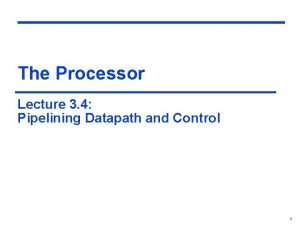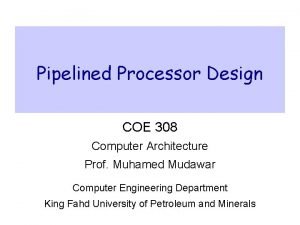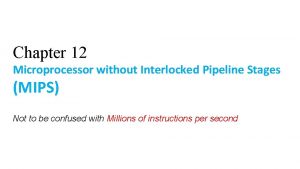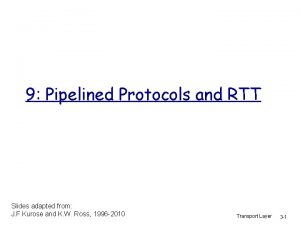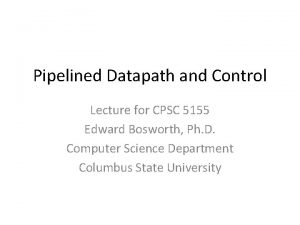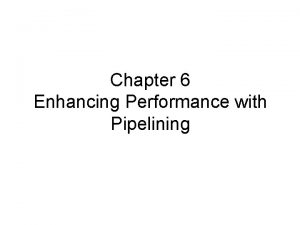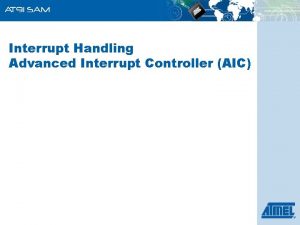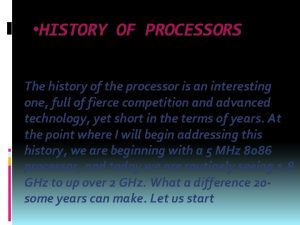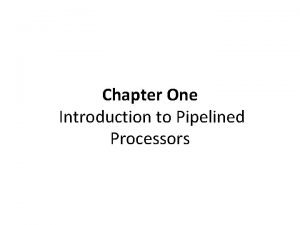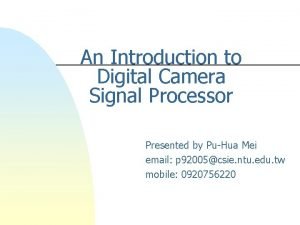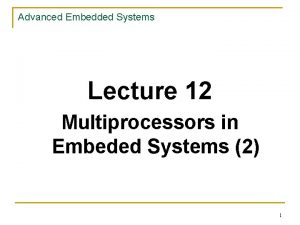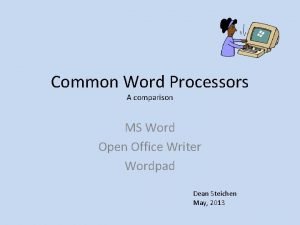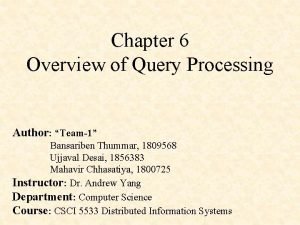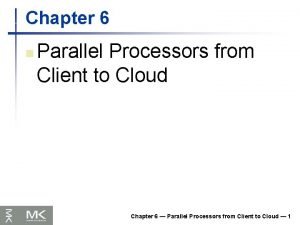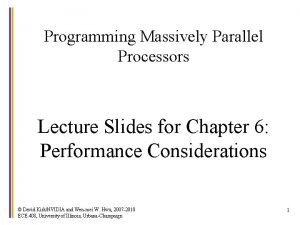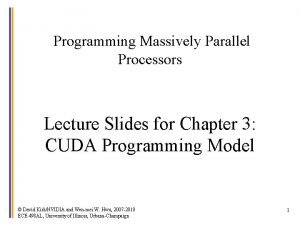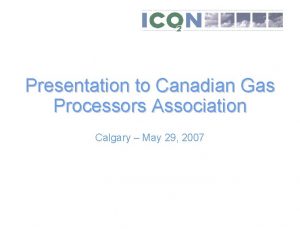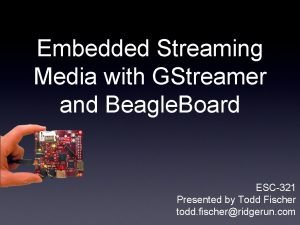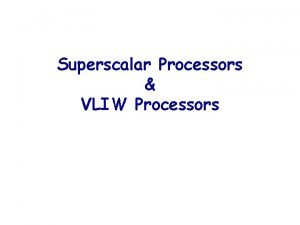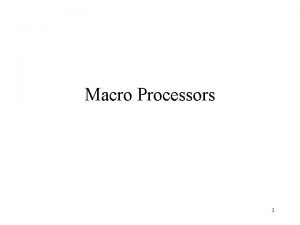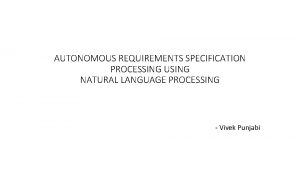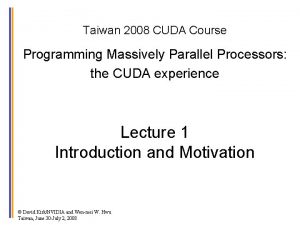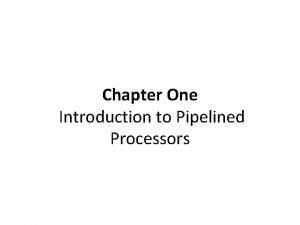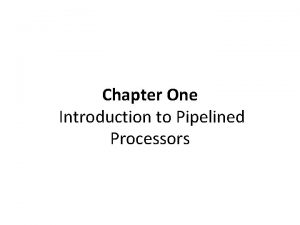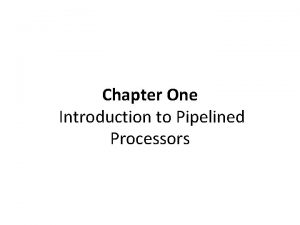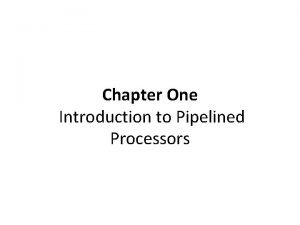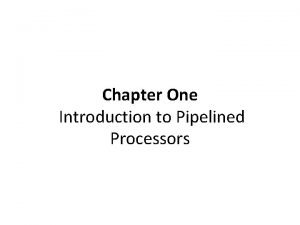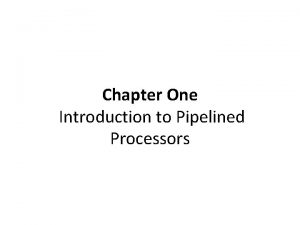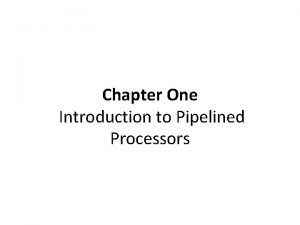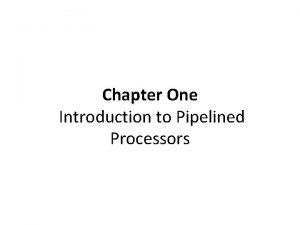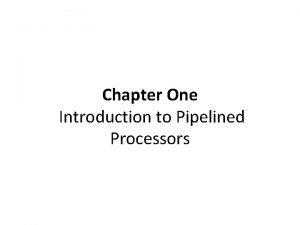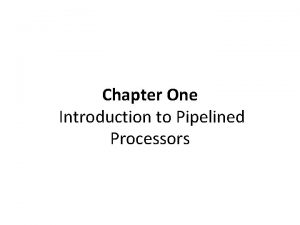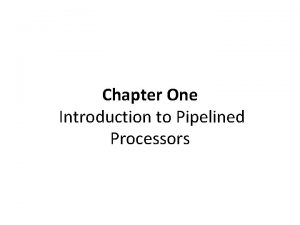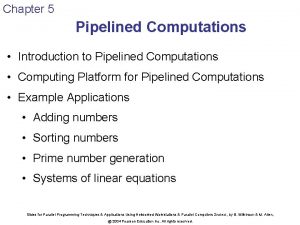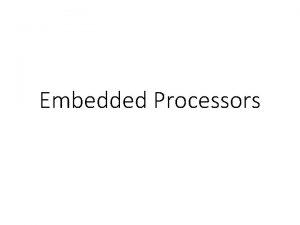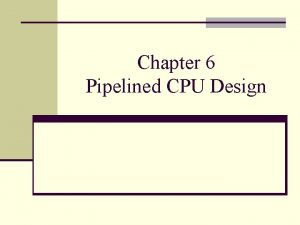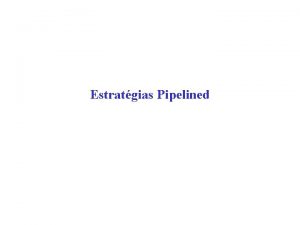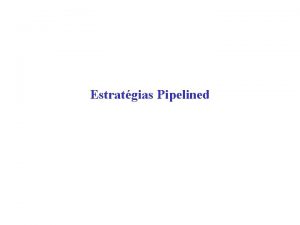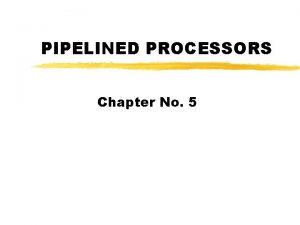Chapter One Introduction to Pipelined Processors Principle of






































- Slides: 38

Chapter One Introduction to Pipelined Processors

Principle of Designing Pipeline Processors (Design Problems of Pipeline Processors)

Internal Data Forwarding and Register Tagging

Internal Forwarding and Register Tagging • Internal Forwarding: It is replacing unnecessary memory accesses by register-to-register transfers. • Register Tagging: It is the use of tagged registers for exploiting concurrent activities among multiple ALUs.

Internal Forwarding • Memory access is slower than register-toregister operations. • Performance can be enhanced by eliminating unnecessary memory accesses

Internal Forwarding • This concept can be explored in 3 directions: 1. Store – Load Forwarding 2. Load – Load Forwarding 3. Store – Store Forwarding

Store – Load Forwarding

Load – Load Forwarding

Store – Store Forwarding

EXAMPLE Example

EXAMPLE Example

Register Tagging

Example : IBM Model 91 : Floating Point Execution Unit

Example : IBM Model 91 -FPU • The floating point execution unit consists of : – Data registers – Transfer paths – Floating Point Adder Unit – Multiply-Divide Unit – Reservation stations – Common Data Bus


Example : IBM Model 91 -FPU • There are 3 reservation stations for adder named A 1, A 2 and A 3 and 2 for multipliers named M 1 and M 2. • Each station has the source & sink registers and their tag & control fields • The stations hold operands for next execution.


Example : IBM Model 91 -FPU • 3 store data buffers(SDBs) and 4 floating point registers (FLRs) are tagged • Busy bits in FLR indicates the dependence of instructions in subsequent execution • Common Data Bus(CDB) is to transfer operands

Example : IBM Model 91 -FPU • There are 11 units to supply information to CDB: 6 FLBs, 3 adders & 2 multiply/divide unit • Tags for these stations are : Unit Tag FLB 1 FLB 2 FLB 3 0001 0010 0011 ADD 2 ADD 3 1010 1011 1100 FLB 4 FLB 5 FLB 6 0100 0101 0110 M 1 M 2 1000 1001

Example : IBM Model 91 -FPU • Internal forwarding can be achieved with tagging scheme on CDB. • Example: • Let F refers to FLR and FLBi stands for ith FLB and their contents be (F) and (FLBi) • Consider instruction sequence ADD F, FLB 1 F (F) + (FLB 1) MPY F, FLB 2 F (F) x (FLB 2)

Example : IBM Model 91 -FPU • During addition : – Busy bit of F is set to 1 – Contents of F and FLB 1 is sent to adder A 1 – Tag of F is set to 1010 (tag of adder) F Busy Bit = 1 Tag=1010

Storage Bus Instruction Unit 6 5 Floating Point Buffers (FLB) 4 Control 3 2 Floating Point Operand Stack(FLOS) Busy Bit = 1 Tag=1010 Tags 1 Decoder Tag Sink 1010 F Tag 0001 Source FLB 1 CTRL Tag Sink Adder Tag Source CTRL Multiplier (Common Data Bus) Store 3 data buffers 2 (SDB) 1

Example : IBM Model 91 -FPU • Meantime, the decode of MPY reveals F is busy, then – F should set tag of M 1 as 1010 (Tag of adder) – F should change its tag to 1000 (Tag of Multiplier) – Send content of FLB 2 to M 1 F Busy Bit = 1 Tag=1000

Storage Bus Instruction Unit Before addition 6 5 Floating Point Buffers (FLB) 4 Control 3 2 Floating Point Operand Stack(FLOS) Busy Bit = 1 Tag=1000 Tags 1 Decoder Tag Sink Tag Source CTRL 1010 F 0010 Tag Sink Tag Adder FLB 2 CTRL Source CTRL Multiplier (Common Data Bus) Store 3 data buffers 2 (SDB) 1

Storage Bus Instruction Unit After addition 6 5 Floating Point Buffers (FLB) 4 Control 3 2 Floating Point Operand Stack(FLOS) Busy Bit = 1 Tag=1000 Tags 1 Decoder Tag Sink Tag Source CTRL 1000 F 0010 Tag Sink Tag Adder FLB 2 CTRL Source CTRL Multiplier (Common Data Bus) Store 3 data buffers 2 (SDB) 1

Example : IBM Model 91 -FPU • When addition is done, CDB finds that the result should be sent to M 1 • Multiplication is done when both operands are available

Hazard Detection and Resolution

Hazard Detection and Resolution • Hazards are caused by resource usage conflicts among various instructions • They are triggered by inter-instruction dependencies Terminologies: • Resource Objects: set of working registers, memory locations and special flags

Hazard Detection and Resolution • Data Objects: Content of resource objects • Each Instruction can be considered as a mapping from a set of data objects to a set of data objects. • Domain D(I) : set of resource of objects whose data objects may affect the execution of instruction I. (e. g. Source Registers)

Hazard Detection and Resolution • Range R(I): set of resource objects whose data objects may be modified by the execution of instruction I. (e. g. Destination Register) • Instruction reads from its domain and writes in its range

Hazard Detection and Resolution • Consider execution of instructions I and J, and J appears immediately after I. • There are 3 types of data dependent hazards: 1. RAW (Read After Write) 2. WAW(Write After Write) 3. WAR (Write After Read)

RAW (Read After Write) • The necessary condition for this hazard is

RAW (Read After Write) • Example: I 1 : LOAD r 1, a I 2 : ADD r 2, r 1 • I 2 cannot be correctly executed until r 1 is loaded • Thus I 2 is RAW dependent on I 1

WAW(Write After Write) • The necessary condition is

WAW(Write After Write) • Example I 1 : MUL r 1, r 2 I 2 : ADD r 1, r 4 • Here I 1 and I 2 writes to same destination and hence they are said to be WAW dependent.

WAR(Write After Read) • The necessary condition is

WAR(Write After Read) • • Example: I 1 : MUL r 1, r 2 I 2 : ADD r 2, r 3 Here I 2 has r 2 as destination while I 1 uses it as source and hence they are WAR dependent

Hazard Detection and Resolution • Hazards can be detected in fetch stage by comparing domain and range. • Once detected, there are two methods: 1. Generate a warning signal to prevent hazard 2. Allow incoming instruction through pipe and distribute detection to all pipeline stages.
 Pipelined datapath
Pipelined datapath Pipelined processor design
Pipelined processor design Microprocessor without interlocked pipelined stages
Microprocessor without interlocked pipelined stages Pipelining protocol
Pipelining protocol Pipelined datapath
Pipelined datapath Pipelined datapath
Pipelined datapath Programming massively parallel processors
Programming massively parallel processors Non linear pipeline processor
Non linear pipeline processor Aicarm
Aicarm The history of cpu
The history of cpu Handlers classification of parallel computing structure
Handlers classification of parallel computing structure Digital camera processors
Digital camera processors Amd processor disadvantages
Amd processor disadvantages Embeded processors
Embeded processors Embedded innovator winter 2010
Embedded innovator winter 2010 Comparison of word processors
Comparison of word processors Distributed query processing
Distributed query processing Parallel processors from client to cloud
Parallel processors from client to cloud Programming massively parallel processors
Programming massively parallel processors David kirk nvidia
David kirk nvidia Gas processors association
Gas processors association Gstreamer architecture
Gstreamer architecture Ece 526
Ece 526 Macro instruction
Macro instruction Difference between superscalar and vliw
Difference between superscalar and vliw Macro instruction arguments
Macro instruction arguments Language and processors for requirement
Language and processors for requirement What is telecommunication network
What is telecommunication network Programming massively parallel processors, kirk et al.
Programming massively parallel processors, kirk et al. One god one empire one religion
One god one empire one religion One one little dog run
One one little dog run One king one law one faith
One king one law one faith Byzantine definition
Byzantine definition One ford plan
One ford plan See one do one teach one
See one do one teach one See one, do one, teach one
See one, do one, teach one Willow cabin speech
Willow cabin speech See one do one teach one
See one do one teach one One vision one identity one community
One vision one identity one community
